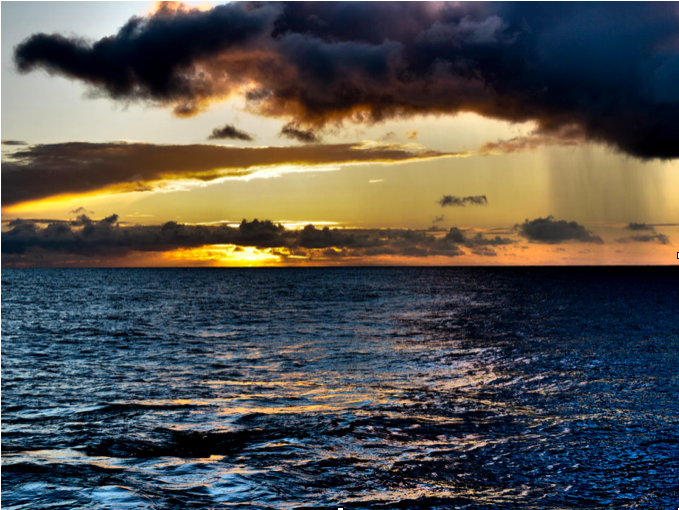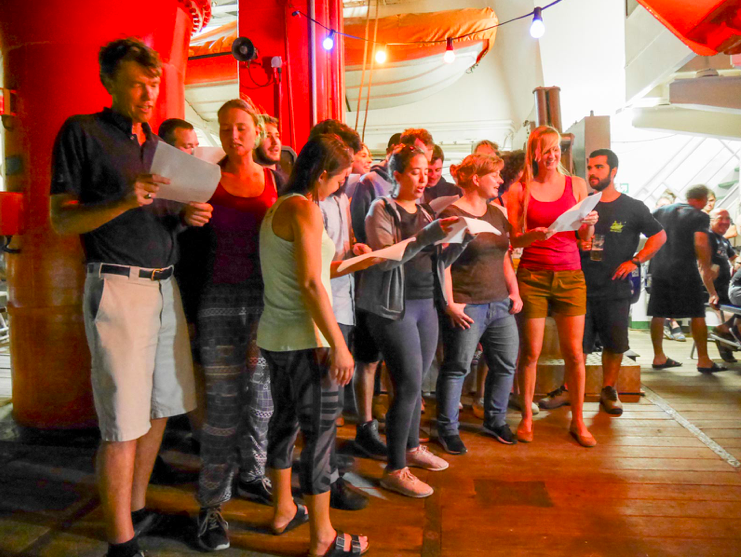For 21 days, the Meteor has passed through the waters of the Atlantic Ocean. Starting our expedition M159 in the southern hemisphere in Recife, Brazil, we worked our way northward to a ship position close to the Cap Verde Islands, where we are about to collect our last mooring for this cruise – the Cape Verde Ocean Observatory – CVOO.
On our journey we did not only cross the equator from south to north, which is very special on its own – we also crossed the Atlantic from west to east. We had hot tropical days and warm nights, light breezes and stronger trade winds and soft rains (ITCZ).

Photo by Martin Visbeck
Our CTD System, measuring temperature, pressure and conductivity (to derive salinity of the seawater), moved through the euphotic zones, of the oceans, flooded with light, to the eternal darkness of the abyssal ocean. The temperatures we measured ranged from 33°C at the surface to less than 2°C within the deepest waters of the worlds oceans. Passing through different water masses, our CTD system also traveled back in time, as some of those water masses were isolated from the surface and the atmosphere long time ago and come from far places.
Our Fluorescence Sensors, which measure the concentration of chlorophyll and hence the abundance of Phytoplankton in the water column, showed zones of increased biological activity near the Brazilian shelf break and zones of very low activity in the open ocean.

Especially the later, the azure blue clear waters of the open Atlantic ocean, we can see everyday since leaving the Brazilian coast. Sometimes we pass by features which represent oases in the deserts of the vast ocean. These oases can, for example, be seamounts or tall surface-reaching moorings (e.g. PIRATA) and provide a habitat and food source for many species.
The participants on this cruise are people from different continents (Africa, South America, Europe), countries and cultures, speaking different languages, at different stages in their lives and having different expectations. They all work together to collect ocean data with the highest quality possible in order to contribute to the understanding of the ocean. This objective unifies us and gives us the unique opportunity to learn, adapt and discuss what we experience everyday. For the time of the cruise we all transitioned from “landlubbers” to “seamen” and from individual scientists and students into a big team advancing together. Experiencing how much work is needed in order to collect the observational datasets used in ocean sciences is an eye opener for many. This is typically followed by first analyses of the collected data and their interpretation bringing different datasets together.
To put our data into the broader context of scientific knowledge we have lectures and a science seminar almost every day. This helps us to understand just a little more about the ocean and its role in our earths climate system. Although challenging for each and every one of us, this is what science is about.
Written by Patricia Handmann, GEOMAR 2019